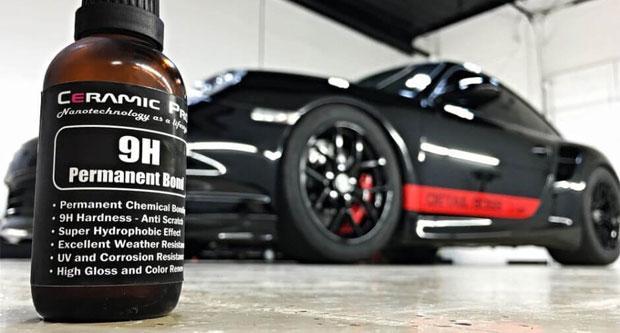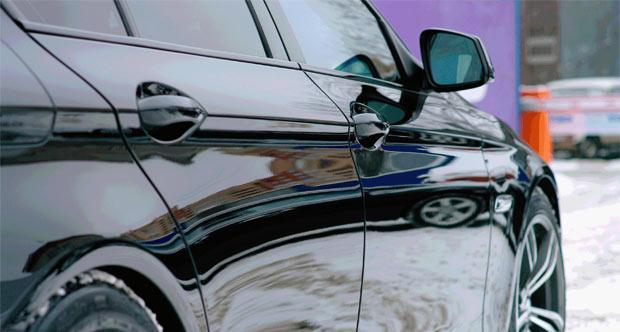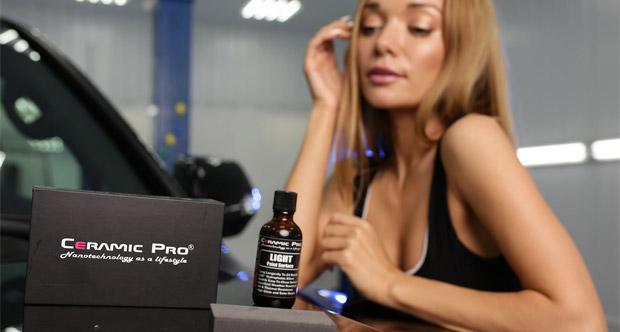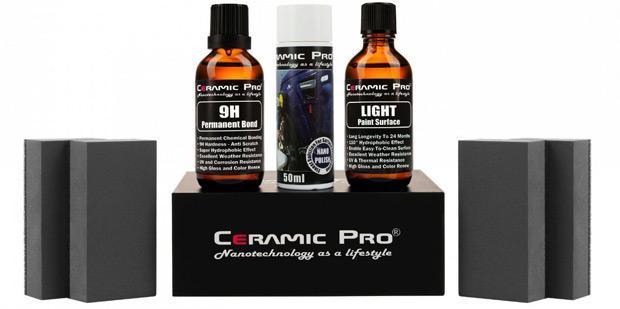
Automotive nanoceramics. New technologies in paint protection
Content
What is nanoceramics?
The exact composition of nanoceramics for cars, especially from brands that have proven themselves on the market, is kept secret. At the time of this writing, there is no official information in the public domain about what this product is and what exactly it consists of. There are only assumptions that are likely to be at least not far from the truth.
Little is known about nanoceramic coatings.
- The basic composition is made on a silicon basis (to be more precise, silicon dioxide). This is evidenced by the similarity of action with well-known compositions on the market, which we call "liquid glass". The final properties of the created coating for these two compositions are similar. Therefore, many motorists and detailing center specialists agree that nanoceramics is nothing more than a modified version of previously produced liquid glass. And the loud name is nothing more than a marketing ploy.
- Nanoceramics have very high adhesion properties. Regardless of the original quality of the paintwork and the materials used for painting cars, the silicon base is very firmly fixed on the surface of the body elements.


- Nanoceramics for cars have a high penetrating ability into the upper layers of the paintwork. The composition is not just superimposed on car varnish, but partially passes a few tenths or hundredths of a micron into the structure of the native paintwork. And this enhances adhesion.
- The duration of the effect. Depending on the initial quality of the composition, the correct application and the operating conditions of the car, nanoceramics stay on the paintwork without visible defects for up to 5 years.
- Coating hardness. The popular Ceramic Pro 9H compound on the market has a relative hardness according to GOST R 54586-2011 (ISO 15184:1998) 9H, which is much harder than any automotive varnish.
- Relative safety for humans and the environment. Modern ceramic coatings can be applied without the use of personal respiratory protective equipment.


Separately, it should be noted the incomparable effect of updating the paintwork. The protective layer of nanoceramics created using the technology will give the factory paintwork a pronounced glossy sheen.
The price of nanoceramics depends on the manufacturer. The original compositions cost around 5-7 thousand rubles. In Chinese online stores, parodies with the same names as famous brands cost around 1000 rubles.


How is nanoceramic applied?
It is better to entrust the processing of a car with nanoceramics to a professional detailing center. Although with the proper approach, it is possible to create a coating of acceptable quality on your own. The products of the Ceramic Pro series have gained the greatest popularity. Let us briefly analyze the main aspects of applying this ceramic.
The main condition for successful processing with nanoceramics is the correct preparation of the paintwork. No other way to protect the car body requires such a thorough approach to the preparatory procedures.
The first stage is a careful examination and assessment of the damage already existing on the paintwork. Deep chips, cracks, dents and corrosion must be completely removed. Otherwise, nanoceramics may not only not hide these defects, but even emphasize them.


After removing visible damage, polishing is performed. The better the body is polished, the better the effect of nanoceramics will be. Therefore, in auto centers, polishing is performed in several stages with the final removal of microroughness with fine-grained abrasive pastes.
Next, the paintwork is degreased and small contaminants are removed using car waxes or other means that can remove dirt from the pores on the varnish. This is also an important procedure, since the strength and durability of the film formed by ceramics depends on the purity of the paintwork.
Processing with nanoceramics must be carried out in a room closed from direct sunlight. Humidity should be kept to a minimum. At the same time, the presence of dust or other potential contaminants is unacceptable.
A few drops of the product are applied to a lint-free sponge or a special rag and rubbed over the surface to be treated. The most effective is rubbing on the surface of the processed element alternately horizontally and vertically. Circular or one-sided movements of the sponge are also used by some masters, but less often.


The first layer, when applied, is almost completely absorbed by the varnish. It serves as a kind of primer for applying the following layers. Each subsequent layer is reinforcing.
Depending on the manufacturer's recommendations, intermediate drying between coats can last from several minutes to several hours.
The minimum recommended number of ceramic coating layers is 3. It is not advisable to apply one or two layers, since the protective and decorative effects will be minimal. The maximum number of layers is 10. Building up new layers after 10 existing ones will lead to nothing but an increase in the cost of the coating.
Finishing is carried out with Ceramic Pro Light. It is this tool that gives extra shine and gloss to the entire coating.


Watch this video on YouTube
Advantages and disadvantages
Nanoceramics have more advantages than disadvantages:
- durability (service life reaches 5 years, but only with strict adherence to the application technology);
- a significant increase in the hardness of the varnish;
- the best effect on the market for enhancing the brightness and color depth of the original paintwork of a car;
- hydrophobic effect, which extends to all liquids and substances based on water (dirt, ice and snow, bird droppings, etc.);
- anti-vandal effect, which consists in easy removal of paint in case it gets on body parts;
- protection of paint from sand and small abrasives flying out from under the wheels of a car;
- partial protection against chemical aggression and UV rays.


There are also disadvantages of nanoceramic coating:
- complex technology for creating a protective layer and a laborious procedure for removing the coating if necessary;
- poor protection against serious mechanical impacts, such as stones flying out from under the wheels or minor accidents;
- vulnerability to strong alkalis.
Currently, at a relatively affordable cost, coating a car with nanocermics looks very attractive against the background of most other options for protecting paintwork.


Reviews car owners
Reviews of motorists regarding the coating of the car with nanoceramics vary. Some car owners turn to detailing centers where ceramics are applied professionally, in compliance with the technology. This procedure is not cheap. Covering the body of a medium-sized passenger car will cost 30-50 thousand with all preparatory and finishing work. However, the effect in this case often exceeds even the wildest expectations of motorists. The only thing that drivers are unhappy with in their reviews is the high cost of the work itself.
When self-applying ceramics, there are many stages at which car owners do not focus and make mistakes. The coating is uneven, matte or streaked in places. And this is instead of the promised glossy shine. Which causes a wave of negativity.
Also, some car owners talk about the low service life of ceramics. After a year or two of active operation of the car, there are many visible areas where the coating has chipped or peeled off. But the beauty of nanoceramics lies in the fact that it is possible to locally restore the resulting damage without any special problems and material costs.


Watch this video on YouTube